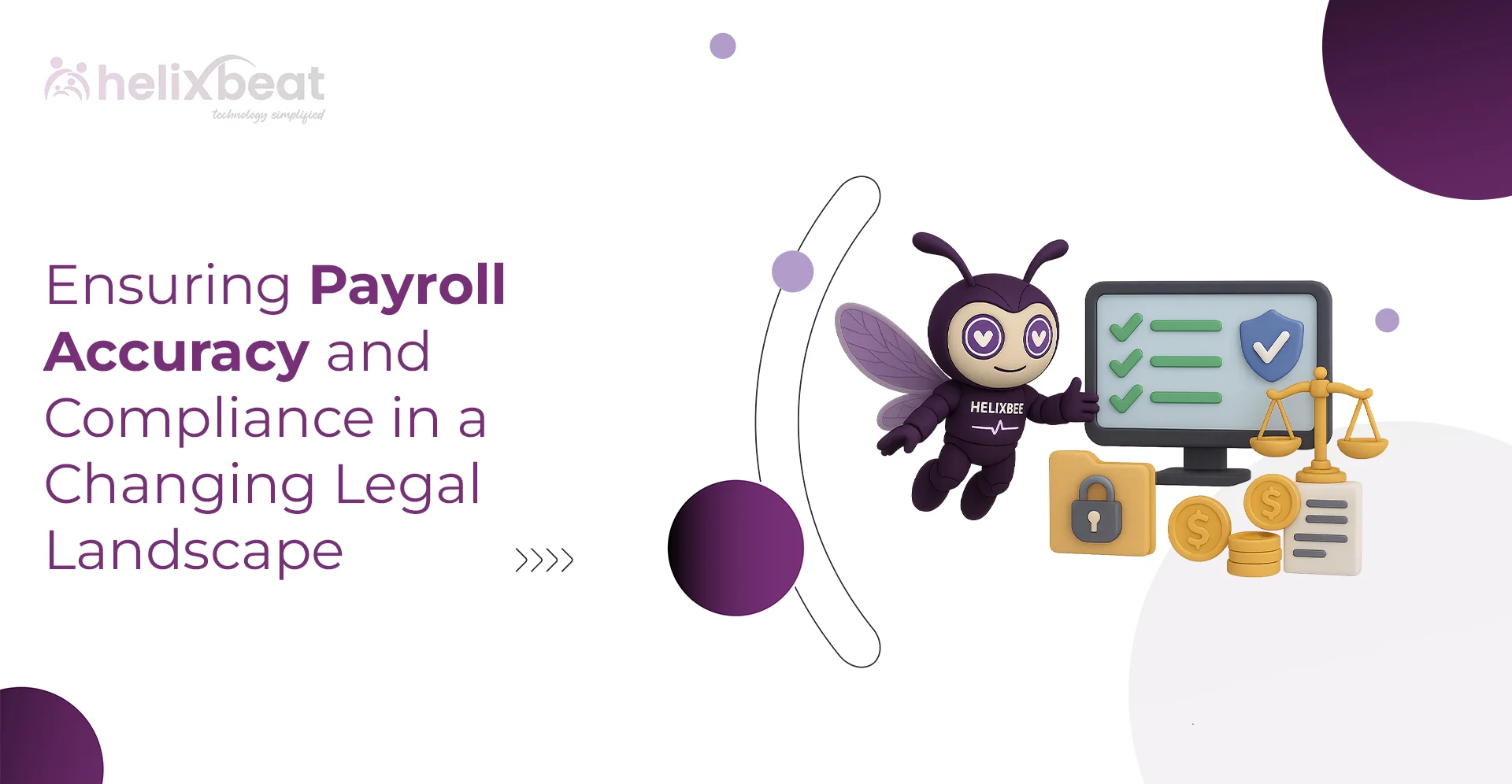A major e-commerce platform once lost millions in revenue due to a single unnoticed security flaw. Web applications, whether for online shopping, banking, or enterprise management, are the backbone of modern businesses. However, even the most sophisticated systems can suffer from critical bugs that compromise security, performance, and user experience. Without rigorous web application testing, these vulnerabilities can lead to data breaches, system crashes, and financial losses.
This is where web application testing services become essential. By using advanced web application testing tools, businesses can proactively identify and eliminate threats before they cause real damage. From SQL injection to broken authentication and poor session management, addressing these issues early helps maintain a secure and high-performing application.
In this article, we’ll explore 10 common web application bugs and how Helixbeat comprehensive testing solutions help businesses safeguard their applications against potential risks.
Table of Contents
10 Common Web Application Bugs and How Helixbeat’s Web Application Testing Services Fix Them
Even the most advanced web applications can have hidden vulnerabilities that threaten security and performance. With web application testing services, businesses can spot and fix these risks before they cause harm. Helixbeat uses advanced web application testing tools to keep applications secure, efficient, and resilient against cyber threats. Here’s how we create a bug-free web application:
1. Cross-Site Scripting (XSS)
Cross-Site Scripting (XSS) occurs when attackers inject malicious scripts into a web application, allowing them to steal data, hijack user sessions, or manipulate website content. Applications handling sensitive user information are especially at risk, making web application testing essential to detect and neutralize such threats.
How Helixbeat Prevents It:
- Implements automated security testing to detect vulnerabilities early.
- Uses input validation and output encoding to neutralize harmful scripts.
- Conducts penetration testing to simulate real-world attack scenarios.

2. SQL Injection (SQLi)
SQL Injection allows hackers to manipulate database queries, leading to unauthorized data access, deletion of records, or complete system compromise. Applications that store financial or personal information are prime targets for these attacks, emphasizing the need for web application testing services that focus on database security.
How Helixbeat Prevents It:
- Uses parameterized queries and prepared statements to block malicious SQL commands.
- Conducts automated and manual database security testing.
- Regularly audits database access controls to prevent exploitation.

3. Broken Authentication & Session Management
Weak authentication mechanisms enable attackers to hijack user sessions, impersonate users, and access confidential data. Without proper web application testing tools, these vulnerabilities can go unnoticed, increasing the risk of account takeovers.
How Helixbeat Prevents It:
- Implements multi-factor authentication (MFA) for added security.
- Uses secure session tokens with proper expiration policies.
- Performs penetration testing to identify weak authentication flows.

4. Cross-Site Request Forgery (CSRF)
CSRF attacks trick users into executing unintended actions on a web application, often without their knowledge. This can result in unauthorized transactions, password changes, or data manipulation, making web application testing a crucial step in prevention.
How Helixbeat Prevents It:
- Implements CSRF tokens to validate legitimate requests.
- Uses same-site cookie attributes to prevent cross-domain attacks.
- Conducts security testing to detect CSRF vulnerabilities.

5. Security Misconfigurations
Improper security settings, such as default credentials, open ports, or outdated software, create serious vulnerabilities. Many breaches occur due to these oversights, making web application testing services indispensable for identifying and correcting misconfigurations.
How Helixbeat Prevents It:
- Conducts regular security audits to identify misconfigurations.
- Enforces best security practices during deployment.
- Uses automated vulnerability scanning to detect weaknesses.

6. Outdated Software and Components
Many security breaches occur due to using outdated libraries, frameworks, or plugins with known vulnerabilities. Continuous monitoring and patch management, facilitated by web application testing tools, are key to preventing such risks.
How Helixbeat Prevents It:
- Maintains continuous monitoring of software dependencies.
- Automates patch management to apply security updates promptly.
- Ensures third-party components comply with security standards.

7. Unvalidated Redirects & Forwards
Attackers exploit unvalidated redirects to send users to malicious websites, leading to phishing attacks or malware distribution. Web application testing services help identify and prevent such risks by validating redirects.
How Helixbeat Prevents It:
- Uses whitelisting for allowed redirects.
- Implements user permission validation before executing redirects.
- Conducts penetration tests to identify redirect vulnerabilities.

8. Business Logic Flaws
Errors in business logic allow attackers to bypass intended workflows, such as placing fraudulent orders or altering financial transactions. Identifying these vulnerabilities requires combining web application testing tools and manual testing.
How Helixbeat Prevents It:
- Conducts manual and automated business logic testing.
- Simulates real-world attacks to detect workflow weaknesses.
- Implements rule-based anomaly detection to catch abnormal activities.

9. Insufficient Logging & Monitoring
Without proper logging and monitoring, businesses may not detect security breaches until it’s too late, leading to delayed responses and data loss. Implementing real-time monitoring through web application testing services enhances security.
How Helixbeat Prevents It:
- Implements real-time monitoring and automated alerts.
- Ensures comprehensive logging of all security events.
- Conducts regular security audits to identify suspicious activities.

10. Improper API Security
APIs with weak security expose applications to data leaks, unauthorized access, and denial-of-service attacks. Comprehensive web application testing is necessary to secure API endpoints and prevent breaches.
How Helixbeat Prevents It:
- Uses API authentication and encryption to prevent unauthorized access.
- Conducts API penetration testing to identify security gaps.
- Implements rate limiting and access controls for API security.

Final Words
Web applications are the backbone of modern businesses, but even minor bugs can lead to major security and performance issues. Through rigorous web application testing services and cutting-edge tools, Helixbeat helps businesses proactively detect and eliminate vulnerabilities before they escalate.
Businesses can build robust, reliable web applications that provide seamless user experiences by prioritising security and performance. Contact Helixbeat’s expert testing team today to safeguard your web applications against evolving cyber threats.
FAQs
1. How do security misconfigurations impact web applications?
Security misconfigurations expose sensitive data and can lead to unauthorized access, making applications vulnerable to cyberattacks.
2. What are the risks of using outdated software components?
Outdated software may contain known vulnerabilities that attackers can exploit, leading to security breaches and data loss.
3. How does Helixbeat help prevent SQL injection attacks?
Helixbeat prevents SQL injection by using parameterized queries, prepared statements, and regular security testing.
4. What is CSRF, and why is it dangerous?
CSRF tricks users into executing unintended actions, such as unauthorized fund transfers or password changes, often without their knowledge.
5. How does Helixbeat ensure secure authentication in web applications?
Helixbeat enforces multi-factor authentication, secure session management, and penetration testing to strengthen authentication mechanisms.
6. Why is logging and monitoring crucial for web security?
Logging and monitoring help detect and respond to security breaches in real time, minimizing potential damage.
7. What measures does Helixbeat take to secure APIs?
Helixbeat uses authentication, encryption, penetration testing, and access control mechanisms to secure APIs.
8. How does business logic testing improve web application security?
Business logic testing detects workflow vulnerabilities, preventing attackers from bypassing critical processes like financial transactions.














